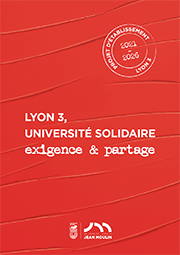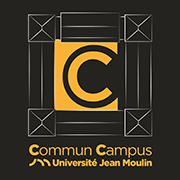AccueilRechercheProgrammes et productions scientifiquesThèsesThèses soutenuesThèses soutenues - 2006-2021Thèses soutenues - 2015
-
Partager cette page
- Recherche,
- Philosophie,
DALMASSO Anna
Le corps c’est l’écran. La philosophie du visuel de Merleau-Ponty
Thèse en Philosophie étude des systèmes soutenue le 1er décembre 2015 en cotutelle avec l'Università digli Studi de Milano.
Merleau-Ponty thinks of the visible world not simply as an object, but as the pivot for a new conception of rationality and Being, one that seeks to rearticulate the ontological relationship between the self and the world beyond all forms of dualism. Accordingly, the visible is taken into account in its historicity, as long as it is phenomenal and situated in its appearance, but also as it always implies a constitutive invisibility or a certain latency and virtuality. Vision is conceived as a historical and processual phenomenon, including anthropological and epistemic mutations being afoot in our contact with the visible world, inscribed in human forms of expression and particularly artistic creation, which is one of the cores of Merleau-Ponty’s philosophical work. It is then with regard to such aspects that it is possible to refer to a philosophy of the “visual” in Merleau-Ponty, which I will try to characterize, by focusing on some fundamental pivotal points, such as image, medium, technique, work of art, haptic. I will make special reference to the reflection on cinema and the notion of “screen”, in the attempt of both retracing the elaboration of such issues, in relation to sources and different phases of Merleau-Ponty’s philosophy, and appreciating the interest that his thought has generated in other scientific fields related to visual.
Merleau-Ponty’s later thought is primarily concerned with a new conception of visibility, of what the philosopher calls a “generality of the Sensible”, originating both the “reversibility” of the body, its capacity to be both sentient and sensible, and an intentionality of the visible itself. What is at stake in thinking of the seer as being enveloped in the visible, as being of it, within the visible, is an “ontological rehabilitation of the sensible”, which is particularly rich and brings along consequences for an understanding of our contemporary scopic regime, and especially of the ontological status of images and screens in our visual experience.
Merleau-Ponty thinks of the visible world not simply as an object, but as the pivot for a new conception of rationality and Being, one that seeks to rearticulate the ontological relationship between the self and the world beyond all forms of dualism. Accordingly, the visible is taken into account in its historicity, as long as it is phenomenal and situated in its appearance, but also as it always implies a constitutive invisibility or a certain latency and virtuality. Vision is conceived as a historical and processual phenomenon, including anthropological and epistemic mutations being afoot in our contact with the visible world, inscribed in human forms of expression and particularly artistic creation, which is one of the cores of Merleau-Ponty’s philosophical work. It is then with regard to such aspects that it is possible to refer to a philosophy of the “visual” in Merleau-Ponty, which I will try to characterize, by focusing on some fundamental pivotal points, such as image, medium, technique, work of art, haptic. I will make special reference to the reflection on cinema and the notion of “screen”, in the attempt of both retracing the elaboration of such issues, in relation to sources and different phases of Merleau-Ponty’s philosophy, and appreciating the interest that his thought has generated in other scientific fields related to visual.
Pour Merleau-Ponty, l’exigence de repenser la rationalité contemporaine au-delà du dualisme de sujet et objet implique et s’entrelace avec la question du regard, conçu non pas en tant que point d’où se produit une vision du monde, mais comme événement dans lequel le sujet et le monde naissent l’un à l’autre dans un seul mouvement de co-naissance. Le visible alors, et notamment ce type particulier de visible qu’est l’image, est compris comme le point où il en va de la rationalité et de l’Être, en même temps qu’il est pensé dans sa dimension historique, en vertu de son apparition phénoménale et située, mais aussi en tant qu’il implique un revers d’invisibilité ou horizon de latence. Ainsi, le voir est réintégré dans ce corps, dont les yeux voient, et le rapport entre corps et image est compris dans sa trame historique et processuelle, incluant les mutations anthropologiques et épistémiques qui sont à l’œuvre dans notre rapport au monde visible, Merleau-Ponty lui-même n’hésitant pas à faire appel aux médias et aux arts visuels pour poursuivre la formulation d’un tel rapport sur le plan philosophique.
En comprenant le sujet comme un voyant qui n’est pas simplement dans le visible, mais en est, le philosophe en vient à formuler une réversibilité de la vision et une co-implication de sens et sensible, riches de conséquences pour une compréhension du régime scopique contemporain, et convergeant avec les instances propres du tournant iconique ou pictural ayant investi la pensée de l’image, tant dans le domaine anglo-saxon que dans le contexte européen.
C’est donc à partir de ces éléments qu’il est possible de formuler une pensée du visuel de Merleau-Ponty, qu’on cherchera à caractériser par le biais de certains noyaux décisifs – image, œuvre, médium, technique, haptique – et notamment à travers la référence au cinéma et à la notion d’écran, tantôt dans la tentative d’en reconstruire le développement, par rapport aux sources et aux différentes phases de la réflexion merleau-pontienne, tantôt dans la tentative d’en cerner l’impact généré au sein d’autres champs scientifiques, ainsi que d’en mettre en lumière l’intérêt pour toute pensée qui se propose d’interroger l’image et le visuel aujourd’hui.
Mots-clés : Merleau-Ponty, phénoménologie, esthétique, image, cinéma, écran, médium, historicité, tournant iconique
Keywords : Merleau-Ponty, phenomenology, aesthetics, image, cinema, screen, medium, historicity, iconic turn
Andrea PINOTTI
Membres du jury :
Emmanuel de SAINT AUBERT, Directeur de recherche au CNRS, Paris
Philippe DUBOIS, Professeur des universités, Université Sorbonne Nouvelle, Paris 3
Galen JOHNSON, Professeur à l’Université of Rhode Island, Kingston, USA
Eugeni RUGGERO, Professeur à l’Università Cattolica del sacro cuore, Milan
Andrea PINOTTI, Professeur à l’Università degli studi di Milano, Milan
Mauro CARBONE, Professeur des universités, Université Jean Moulin Lyon 3
Président du jury : Philippe DUBOIS
Mention : Très honorable avec les félicitations
Equipe d'accueil : IRPHIL






